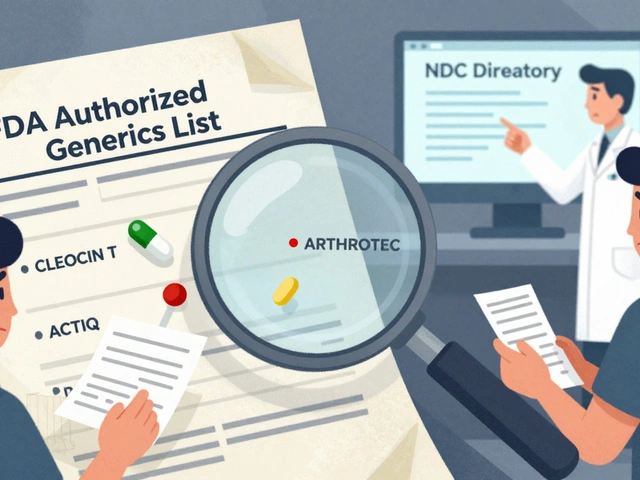
Iron Overload Calculator
This tool estimates annual iron intake from blood transfusions based on transfusion frequency and iron content per unit.
When your body’s blood‑making factory starts to malfunction, the ripple effects can reach far beyond the marrow itself. One of the most serious side‑effects is a buildup of iron that the body can’t dispose of, known as iron overload. This article breaks down why that happens, which disorders are most at risk, and what you can do about it.
Quick Takeaways
- Bone marrow disorders often require frequent blood transfusions, which introduce excess iron.
- Iron overload can damage the liver, heart, and endocrine organs if left untreated.
- Common high‑risk conditions include thalassemia, sickle cell disease, myelodysplastic syndromes, and certain leukemias.
- Regular monitoring of serum ferritin and MRI‑based liver iron concentration is essential.
- Chelation therapy, phlebotomy, and lifestyle tweaks can keep iron levels in check.
What Are bone marrow disorders?
Bone marrow disorders are a heterogeneous group of diseases that affect the production of blood cells. They range from inherited conditions like thalassemia to acquired problems such as myelodysplastic syndromes (MDS) and various leukemias. When the marrow can’t produce healthy red cells, white cells, or platelets, patients often develop anemia, infections, or bleeding tendencies.
Understanding iron overload
Iron overload, medically termed hemosiderosis, occurs when the body accumulates more iron than it can store safely. The liver is the primary repository, but excess iron also settles in the heart and endocrine glands, leading to cardiomyopathy, diabetes, and hormonal imbalances. Unlike dietary iron, which the gut regulates, the iron from blood transfusions bypasses normal absorption controls.
Why Blood Transfusions Spark Iron Overload
Each unit of packed red blood cells contains roughly 250mg of elemental iron. For people with chronic anemia, the need for transfusions can add up quickly. The body lacks a physiological pathway to excrete this surplus, so iron accumulates. Over time, even a modest transfusion regimen-say, one unit every month-can push serum ferritin levels beyond the safe threshold of 1,000µg/L.
Key Bone Marrow Disorders Linked to Iron Overload
Not all marrow diseases carry the same risk. Below is a snapshot of the most common culprits.
- Thalassemia - An inherited hemoglobin defect that often requires lifelong transfusions. Iron overload is a leading cause of mortality if not managed.
- Sickle cell disease - Episodic pain crises and chronic anemia lead many patients to receive regular transfusions, especially during stroke prevention protocols.
- Myelodysplastic syndromes - Ineffective blood formation prompts supportive transfusions; iron toxicity compounds the already high risk of organ failure.
- Acute and chronic leukemia - Intensive chemotherapy often suppresses marrow, necessitating transfusion bridges that can tip iron balance.

How Doctors Diagnose Iron Overload in These Patients
The first clue is usually a rising serum ferritin, but ferritin can be inflated by inflammation. To confirm, clinicians turn to:
- Transferrin saturation - Values above 45% suggest excess iron.
- Magnetic resonance imaging (MRI) of the liver - Provides a non‑invasive iron concentration readout.
- Cardiac T2* MRI - Detects early heart iron deposition before symptoms appear.
Regular monitoring (every 3-6months) is standard for high‑risk groups.
Managing Iron Overload: Chelation therapy and More
When iron starts to pile up, there are three main strategies.
- Chelation therapy - Medications like deferoxamine (injectable), deferasirox (oral), and deferiprone (oral) bind iron and facilitate its excretion via urine or feces. Choice depends on organ involvement, compliance, and side‑effect profile.
- Phlebotomy - Regular removal of blood units can be effective for patients who are not heavily transfused, such as those with hereditary hemochromatosis.
- Lifestyle tweaks - Limiting supplemental iron, avoiding vitamin C megadoses around meals, and maintaining a balanced diet help keep absorption low.
For thalassemia and sickle cell patients, chelation remains the cornerstone because they cannot safely undergo phlebotomy without worsening anemia.
Risks of Ignoring Iron Overload
Uncontrolled iron deposition leads to:
- Cardiac arrhythmias or heart failure - Iron interferes with electrical conduction and myocardial contractility.
- End‑stage liver disease - Fibrosis can progress to cirrhosis and hepatocellular carcinoma.
- Endocrine failures - Diabetes, hypothyroidism, and hypogonadism are common when pancreatic and pituitary glands accumulate iron.
Early intervention can reverse many of these complications, underscoring the need for proactive monitoring.
Emerging Research: Gene Therapy & New Chelators
Recent trials in beta‑thalassemia and sickle cell disease show promise for gene editing approaches that reduce or eliminate transfusion dependence. If successful, iron overload would become a historical footnote for many patients.
On the chelation front, next‑generation oral agents aim for fewer gastrointestinal side effects and better cardiac penetration. Ongoing studies are also exploring combination regimens to target both liver and heart iron simultaneously.
Bottom Line
While the marrow’s primary job is to make blood, many disorders turn it into a lifelong transfusion machine. Every unit adds iron, and without vigilant monitoring, that iron can silently damage vital organs. Regular ferritin checks, MRI assessments, and timely chelation can keep the balance in check, letting patients focus on living rather than fearing organ failure.
Frequently Asked Questions
Can diet alone prevent iron overload in transfusion‑dependent patients?
Diet helps, but it’s not enough. The iron from transfused red cells bypasses intestinal regulation, so chelation or phlebotomy is usually required.
How often should serum ferritin be checked?
For patients receiving regular transfusions, every 3-6months is standard. If ferritin rises rapidly, testing may be more frequent.
Is chelation therapy safe for children?
Yes. Oral agents like deferasirox have been approved for pediatric use, but dosing must be monitored closely for kidney and liver side effects.
What are the signs of cardiac iron overload?
Early signs include reduced exercise tolerance, palpitations, and abnormal ECG findings. Cardiac MRI T2* is the gold‑standard diagnostic tool.
Can phlebotomy be used for patients with thalassemia?
Typically not, because thalassemia patients are already anemic. Removing more blood would worsen their condition, making chelation the preferred option.
| Disorder | Typical Transfusion Frequency | Average Annual Iron Intake (mg) | Primary Management Strategy |
|---|---|---|---|
| Beta‑thalassemia major | 12-24 units | 3,000-6,000 | Chelation (deferasirox) |
| Sickle cell disease | 4-12 units (often episodic) | 1,000-3,000 | Chelation or intermittent phlebotomy (if transfusion‑free periods) |
| Myelodysplastic syndromes | 2-8 units | 500-2,000 | Chelation; consider transfusion‑sparing agents |
| Acute leukemia (induction phase) | 6-10 units (short‑term) | 1,500-2,500 | Short‑term chelation; monitor closely |






11 Comments
In the alchemical theatre of human physiology, iron assumes the role of a double‑edged sword, bestowing vitality yet harboring the potential for silent ruin; the marrow's faltering symphony summons transfusions, each unit a clandestine courier of elemental iron, depositing its load beyond the modest capacity of the liver's vaults.
Consequently, the body confronts an existential dilemma, for iron, unlike the fleeting nutrients of the diet, lacks an excretory conduit, thereby accumulating in an inexorable cascade, a relentless tide that can drown the heart, the pancreas, and the endocrine citadels.
The cascade is not merely biochemical but echoes through the lived experience of patients, whose calendars become punctuated by the rhythmic hum of infusion pumps, each drip a reminder of both salvation and impending toxicity.
Scholars have long noted that serum ferritin, while a convenient proxy, is a fickle sentinel, its readings distorted by the inflammatory tempest that often accompanies marrow failure; thus, the clinician must wield MRI‑based hepatic and cardiac assessments as more reliable cartographers of iron's clandestine voyages.
In this intricate dance, chelation agents emerge as pharmacologic alchemists, converting stubborn iron into soluble complexes, shepherding it toward urinary and fecal excretion, yet their efficacy hinges upon adherence, organ specificity, and the specter of side‑effects that demand vigilant monitoring.
Moreover, the narrative of iron overload is not monolithic; thalassemia patients, ensnared in lifelong transfusion regimens, confront a distinct trajectory compared to those with myelodysplastic syndromes, whose intermittent needs paint a different risk canvas.
The iron‑laden tableau thus demands a personalized approach, integrating transfusion frequency, individual pharmacogenomics, and the nuanced interplay of comorbidities that may amplify oxidative stress.
While the scientific community peers into the future with gene‑editing promises, the present reality necessitates a pragmatic triad: diligent surveillance, timely chelation or phlebotomy when feasible, and patient education that demystifies the invisible threat.
One cannot overstate the importance of interdisciplinary coordination, where hematologists, hepatologists, and cardiologists converge, their collective expertise forming a bulwark against the silent encroachment of hemosiderosis.
Ultimately, the saga of bone marrow disorders and iron overload is a testament to the delicate equilibrium of life, a reminder that every therapeutic intervention bears a cost, and that balance is restored only through vigilance, compassion, and the relentless pursuit of knowledge.
The psychosocial burden, often eclipsed by clinical metrics, manifests in anxiety over future organ failure, urging providers to address mental health alongside biochemical parameters.
Dietary counseling, albeit insufficient alone, remains a valuable adjunct, emphasizing the avoidance of high‑iron supplements and unregulated vitamin C co‑intake that can accelerate absorption.
Emerging data on combination chelation regimens suggest synergistic benefits, yet the evidence base remains nascent, demanding rigorous trials.
For pediatric populations, dosing strategies must reconcile growth considerations with the imperative to curb iron accumulation, a delicate calibration that underscores the art of pediatric hematology.
In sum, the intertwining of marrow pathology and iron homeostasis constitutes a clinical tapestry that challenges clinicians to harmonize intervention with the preservation of quality of life.
Another expertly written piece, though it drifts into mediocrity.
Reading through the iron overload calculator reminded me how quantitative tools can demystify a complex condition; the clear layout makes it easy for patients to track their annual iron intake without needing a specialist.
It also highlights the hidden burden that frequent transfusions impose, a point often overlooked in broader discussions about marrow disorders.
By presenting the data in an accessible format, the article encourages proactive monitoring, which is essential for early intervention.
Overall, the piece bridges clinical detail with patient empowerment in a thoughtful manner.
Hey folks! This article really breaks down a scary topic into bite‑size pieces, making it less intimidating 😊.
The practical tips on chelation and monitoring feel doable, especially when you have a supportive care team.
Keep sharing these resources – the more we talk about iron overload, the better we can manage it together!
Oh great, another reminder that a simple unit of blood comes with a side‑dish of iron overload – because we definitely needed more drama in our lives.
The chelation options read like a menu at a pharmacy, each promising to sweep away years of excess metal with a happy pill.
If only the side‑effects were as subtle as the article makes them sound.
Thanks for putting all this info together it really helps people understand why monitoring iron is so important.
The step‑by‑step guide on using the calculator is clear and easy to follow.
I especially appreciate the sections on lifestyle tweaks they feel doable for anyone.
Keep up the good work and keep the info coming
Let us not veil the stark reality: iron overload is a silent assassin lurking beneath the veneer of life‑saving transfusions; it gnaws at the heart, the liver, the very essence of vitality, demanding immediate, uncompromising action.
The article correctly flags ferritin as a deceptive marker, yet many clinicians cling to its convenience, ignoring the nuanced MRI assessments that reveal true organ burden.
We must champion relentless chelation, pushing for protocols that prioritize cardiac protection above all else; complacency is a luxury we cannot afford.
Moreover, the emerging gene‑editing therapies, while promising, must be scrutinized relentlessly before being heralded as cure‑alls; hype without rigorous validation is nothing but dangerous optimism.
What strikes me most is how the interplay of transfusion frequency and iron accumulation creates a feedback loop that can spiral out of control; every unit adds to the hidden reservoir, pushing ferritin beyond safe limits 😟.
The piece does a solid job of outlining monitoring strategies, especially the role of cardiac T2* MRI in catching early heart iron before symptoms arise.
I also love the emphasis on patient education – empowering individuals to track their own iron intake can shift the narrative from passive receipt to active management.
Let’s keep championing these practical tools and ensure they reach the communities that need them most.
Honestly, you’ve got to wonder why the pharma giants are so quick to push new chelation drugs – the side‑effect profiles are often downplayed, and the long‑term data remains murky.
Meanwhile, the real solution, a drastic reduction in transfusion reliance via gene therapy, is quietly stifled by costly patents and regulatory inertia.
It’s no coincidence that the article glosses over these systemic barriers, focusing instead on individual compliance.
Stay skeptical, question the narratives, and demand transparency from all stakeholders.
Reading this comprehensive overview felt like taking a refreshing walk through a well‑organized museum of hematology knowledge, where each exhibit – from the iron overload calculator to the cutting‑edge gene‑editing trials – invites you to linger, reflect, and absorb the details.
I especially appreciated how the authors blended hard data with practical advice, reminding us that monitoring ferritin isn’t just a lab value but a lifeline that can steer patients away from organ damage.
The sections on chelation therapy were thorough yet approachable, highlighting both oral and injectable options without drowning the reader in jargon.
It’s encouraging to see the emphasis on multidisciplinary care, because no single specialist can tackle the complexities of iron toxicity alone; collaboration between hematologists, cardiologists, and hepatologists becomes essential.
Moreover, the hopeful glimpse into future therapies – gene editing, next‑generation chelators – injects optimism into what can otherwise feel like a bleak landscape.
Keep sharing these kind of balanced, evidence‑based resources; they empower patients and clinicians alike, fostering a community that’s informed, resilient, and ready to face the challenges ahead.
The article is overly verbose and fails to prioritize actionable data.
It reads like a fluff piece that obscures the real clinical urgency.